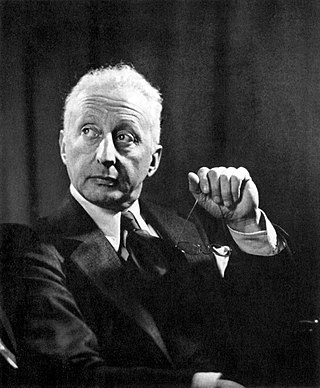
Jerome David Kern was an American composer of musical theatre and popular music. One of the most important American theatre composers of the early 20th century, he wrote more than 700 songs, used in over 100 stage works, including such classics as "Ol' Man River", "Can't Help Lovin' Dat Man", "A Fine Romance", "Smoke Gets in Your Eyes", "The Song Is You", "All the Things You Are", "The Way You Look Tonight" and "Long Ago ". He collaborated with many of the leading librettists and lyricists of his era, including George Grossmith Jr., Guy Bolton, P. G. Wodehouse, Otto Harbach, Oscar Hammerstein II, Dorothy Fields, Johnny Mercer, Ira Gershwin and Yip Harburg.
Carolyn Leigh was an American lyricist for Broadway, film, and popular songs. She is best known as the writer with partner Cy Coleman of the pop standards "Witchcraft" and "The Best Is Yet to Come". With Johnny Richards, she wrote the million-seller "Young at Heart" for the film of the same name, starring Frank Sinatra.

Harry Bache Smith was a writer, lyricist and composer. The most prolific of all American stage writers, he is said to have written over 300 librettos and more than 6000 lyrics. Some of his best-known works were librettos for the composers Victor Herbert and Reginald De Koven. He also wrote the book or lyrics for several versions of the Ziegfeld Follies.
This is a selected list of the longest-running musical theatre productions in history divided into two sections. The first section lists all Broadway and West End productions of musicals that have exceeded 2,500 performances, in order of greatest number of performances in either market. The second section lists, in alphabetical order, musicals that have broken historical long run records for musical theatre on Broadway, in the West End or Off-Broadway, since 1866, in alphabetical order.

Sir George Dance was an English lyricist and librettist in the 1890s and an important theatrical manager at the beginning of the 20th century.
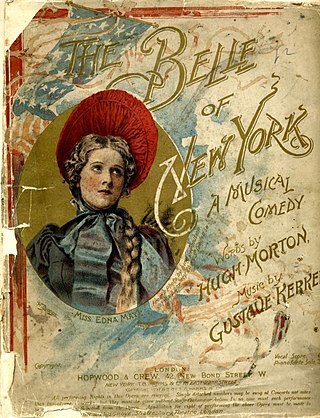
The Belle of New York is a musical comedy in two acts, with book and lyrics by Hugh Morton and music by Gustave Kerker, about a Salvation Army girl who reforms a spendthrift, makes a great sacrifice and finds true love.
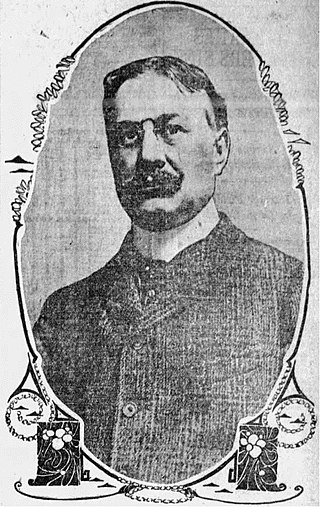
Gustave Adolph Kerker, sometimes given as Gustav or Gustavus Kerker, was a German-born composer and conductor who spent most of his life in the United States. He became a musical director for Broadway theatre productions and wrote the music for a series of operettas and musicals produced on Broadway and in the West End. His most famous musical was The Belle of New York (1897).

J. Harold Murray was an American baritone singer and actor. For more than a decade, during the Roaring Twenties and the Depression Thirties, he contributed to the development of musical theater by bridging vaudeville, operetta and the modern American musical. The most popular American songs he introduced on Broadway included "Autumn in New York" ; "Let's Have Another Cup of Coffee" and "Soft Lights and Sweet Music" ; "Rio Rita", "The Kinkajou" and "The Rangers Song" ; and "Mandalay".
Harold Richard Atteridge was an American composer, librettist and lyricist primarily for musicals and revues. He wrote the book and lyrics for over 20 musicals and revues for the Shubert family, including several iterations of The Passing Show.

Truly Shattuck was a soubrette star of vaudeville, music halls, and Broadway whose career began in tragedy and ended in relative obscurity.
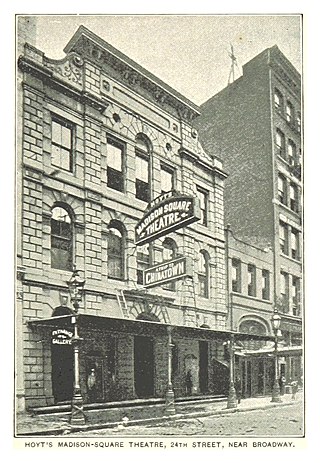
The Madison Square Theatre was a Broadway theatre in Manhattan, on the south side of 24th Street between Sixth Avenue and Broadway It was built in 1863, operated as a theater from 1865 to 1908, and demolished in 1908 to make way for an office building. The Madison Square Theatre was the scene of important developments in stage technology, theatre design, and theatrical tour management. For about half its history it had other names including the Fifth Avenue Theatre, Daly's Fifth Avenue Theatre, Hoyt's Madison Square Theatre, and Hoyt's Theatre.

Charles Morton Stewart McLellan (1865–1916) was a London-based American playwright and composer who often wrote under the pseudonym Hugh Morton. McLellan is probably best remembered for the musical The Belle of New York and drama Leah Kleschna.
In Gay New York is a musical revue with a script by C. M. S. McLellan, under his pseudonym Hugh Morton, and music by Gustave Kerker. The story revolves around two newlyweds from Maine who come to New York City, do some sightseeing, and see bits from the 1895–96 season at the Casino satirized in vaudevillian action.
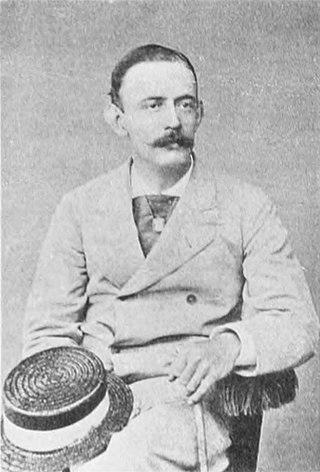
John Cheever Goodwin was an American musical theatre librettist, lyricist and producer. Goodwin was born in Boston and graduated from Harvard University. He began a career in journalism before turning to writing for the stage. Early in his theatrical career he worked for Alice Oates, acting in her company and translating French opera bouffe into English for performance by her company. He often worked with composers Edward E. Rice and Woolson Morse. Goodwin was one of the earliest American writers dedicated to musical theatre librettos and lyrics. His first successful libretto was Evangeline in 1874, and his last new work was produced in 1903.
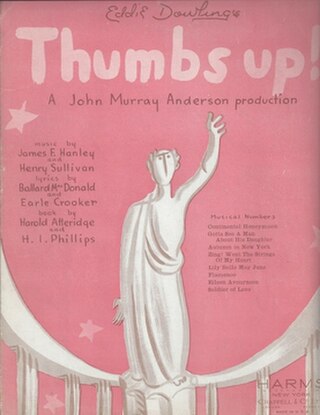
Thumbs Up! is a musical revue in two acts, with book by H. I. Phillips, Harold Atteridge, and Alan Baxter. The show had songs with lyrics by Ballard MacDonald and Earle Crooker and music by James F. Hanley and Henry Sullivan. Additional lyrics by Karl Stark, Ira Gershwin, John Murray Anderson, Irving Caesar, Jean Herbert, and Vernon Duke and additional music by Vernon Duke, Gerald Marks, and Steve Child. The show was produced by Eddie Dowling at the St. James Theatre. The revue opened on December 27, 1934.

Daly's Theatre was a Broadway theatre at 1221 Broadway and 30th Street. It was built in 1867 and opened that year as Banvard's Museum but changed its name the following year to Wood's Museum and Metropolitan. In 1876 it became the Broadway Theatre, and finally was named Daly's Theatre in 1879 when it was acquired by Augustin Daly. After 1899, it was operated by the Shubert family. The building was demolished in 1920, after serving as a burlesque theatre and cinema.

Madge Lessing was a British stage actress and singer, panto principal boy and postcard beauty of Edwardian musical comedy who had a successful career in the West End in London, Europe and on Broadway from 1890 to 1921 and who made a number of early film appearances in Germany for director Max Mack.

The Lady Slavey was an 1894 operetta in two acts with a score by John Crook, to a libretto by George Dance which opened at the Royal Avenue Theatre in London on 20 October 1894 and which featured May Yohé and Jennie McNulty. After a major rewrite to make it more suitable for American audiences it opened at the Casino Theatre on Broadway on 3 February 1896 where it ran for 128 performances with additional lyrics by Hugh Morton and music by Gustave Adolph Kerker.

Louis Harrison was an actor, playwright, comedian, lyricist, librettist, and theatre director. As both a performer and playwright, he was mainly active within the genres of musical theatre and light opera.















